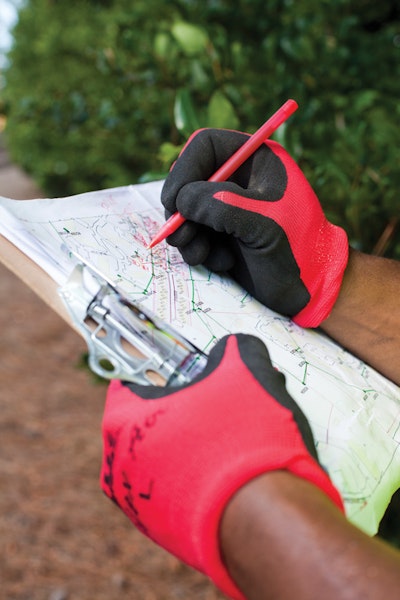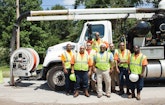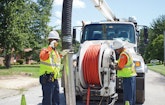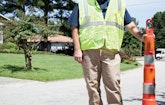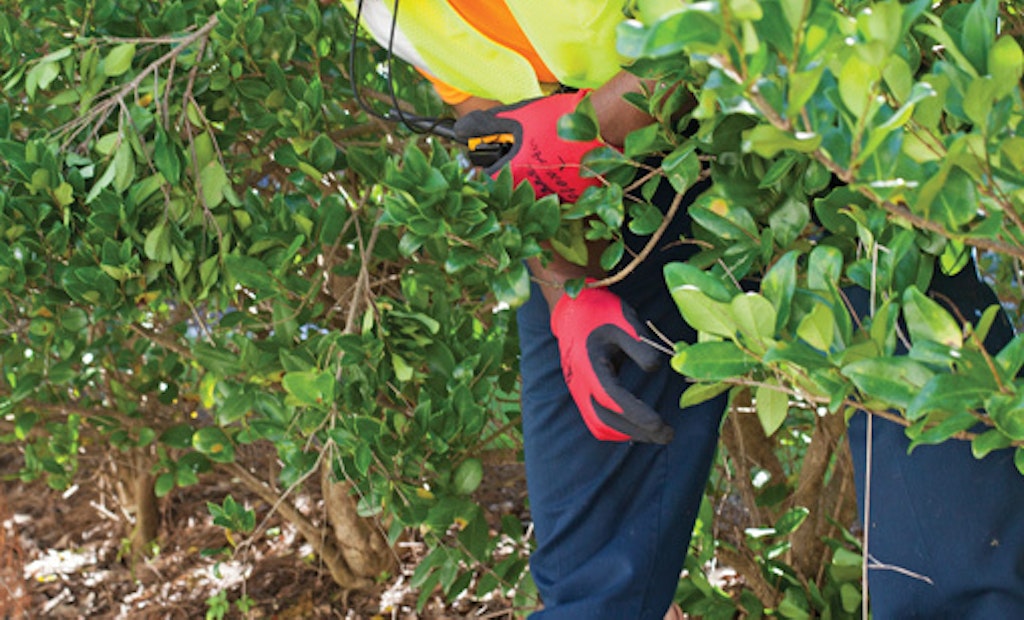
Interested in Inspection?
Get Inspection articles, news and videos right in your inbox! Sign up now.
Inspection + Get AlertsThe Augusta (Ga.) Utilities Department has been tackling a systemwide evaluation under the guidance of a consent order from the Georgia Department of Environmental Protection, and crews are turning to some hi-tech new equipment to get the job done.
Like many cities, the sanitation system in Augusta began as a combined sewer system. Under the consent order, the department has three years to evaluate that portion of the system, and two years beyond that to make any necessary repairs.
“I am actually proud to say that at this point we’re about two years into that initiative and to date we’ve found very few things that have actually required attention in the formerly combined area,” says Jody Crabtree, asset manager for the Augusta Utilities Department. “We know sanitary is going where it should and we’ve been proud to point out that to date we haven’t found anything that would be of environmental concern.”
The department uses GIS to map all its assets, and Crabtree says they are lucky to have fairly detailed maps going all the way back to the 1930s, but they occasionally still find structures that aren’t recorded or don’t match the information in their system. In the formerly combined section of the system, storm drains dumped into the sanitary sewer.
“As we find them they’re being rehabbed,” Crabtree says. “Obviously it’s nothing we are very proud of; there’s still a few of them that are combined.”
Full evaluation
Augusta’s collections system, like most, is comprised of a variety of pipe materials and sizes. Crabtree says about 85 percent of the approximately 950 miles of pipe in the system is 12-inch or smaller, and the largest mains are 84 inches. The older concrete and vitrified clay pipes are the most troublesome, the latter primarily because of joint failure. The system also includes some brick arch pipe that’s still serving the downtown area.
“We have an old system,” Crabtree says. “There is a fair amount of pipe that isn’t very old, but we also have some pipe that was installed in the early 1900s. Some of it was actually installed in the late 1800s.
“We’re working on getting a multipoint inspection done on those, utilizing laser and sonar to get a good idea of what condition those pipes are in. It’s not a huge amount of the system, but we still have some.”
In the mission to map and evaluate every inch of their system, Augusta has turned to new technology, including the SL-RAT from InfoSense. The SL-RAT, or Sewer Line Rapid Assessment Tool, has had a huge impact on the efficiency with which the department is able to assess its collections system. The technician places a transmitter in an open manhole, and the transmitter sends tones to a receiver in a downstream manhole. The receiver compares the tones with tones it should hear in a clean pipe and gives the technician a simple assessment in real time. The acoustic inspection takes less than three minutes without contacting the waste stream.
Crabtree and his team bought their first SL-RAT in April after seeing it at a trade show and wanting to test it out. He says the cost of the unit, combined with the results it yielded in initial tests, made the purchase an easy decision. In fact, it has worked so well they’ve already purchased a second unit.
“Right now our one crew is averaging about 7,000 feet of pipe assessed a day. And no test runs longer than three minutes,” Crabtree says. “I have a crew of two guys that go out with it every day; we give them maps of the system and they go out and run everything on their map that’s an 8-, 10- or 12-inch line.”
The crew brings back the information at the end of the day, and if something needs immediate attention, the collections manager has a report waiting for him the next morning, including a map of the lines that need to be cleaned.
“That’s a huge efficiency booster right there,” Crabtree says. “One of the reasons why we were under consent order was because there were so many overflows and so far this year our overflows are down by 25 percent.”
Crabtree says that can be partially attributed to the SL-RAT, although other initiatives implemented in the past few years have also made an impact, including bolstered root and grease control programs.
“We’re taking baby steps, but the SL-RAT is one of those things that’s turning the baby steps more into a full stride,” he says. “I honestly can’t say enough good things about it.”
Keeping it in-house
Augusta has a robust stable of equipment and capable crews who can handle most jobs.
“Anything that needs to be done we can do in-house,” Crabtree says. “We have our own cleaning trucks, what we consider our first line of defense, the rooter trucks that go out and free up lines when they get clogged or stopped up. We have crews that go out and handle the 3 o’clock in the morning calls. We do all our own locates. There’s very little that we actually have to contract out.”
The utility department also has its own engineering division, though Crabtree says they sometimes seek outside help on larger projects. And while he says the department could be completely self-sufficient if it had to be, they do contract out some cleaning work to keep crews free for other projects.
“We’ve contracted out a little bit of cleaning just because as we’ve been assessing our pipes we’ve found we do have some areas that get dirty relatively quickly,” he says. “We have a local contractor who cleans somewhere around 20,000 feet a month for us but that’s just to free our crews up to do other things.”
The department still does plenty of its own cleaning work, and for that they rely heavily on their fleet of four jet-vac trucks – two from Vac-Con and two from Vactor. They also have several rodder trucks that handle initial response. Crabtree says they typically send out a rodder truck when there is a backup or slow drain, and then follow that up with CCTV inspection and additional cleaning if necessary.
Camera equipment includes an Envirosight ROVVER X, a fully outfitted CUES inspection van and several push cameras from various manufacturers.
“We’ve bought several different kinds, mainly because in the big scheme of things, push cameras are not overly expensive and we’ve sort of been dabbling with different kinds just to see which one we like the best,” Crabtree says. “We’re sort of challenged [by our director] to always think of a different way to do things and that’s sort of the thing here; we’re not married to one manufacturer or vendor or anything. They all have their pros and cons and we evaluate each one on their own merit for what we need before we commit.”
Augusta is also using four robotic Solo cameras from RedZone Robotics. The Solo cameras provide autonomous inspection and 360-degree video of the pipes.
“Two guys can go out and average about 5,000 feet a day with four cameras,” Crabtree says. “They can go out and do a neighborhood in a week, where with a typical crawler system it might take you two weeks to do or even three depending on how fast your crew is.”
Replace or rehab
Augusta has replaced about 30 miles of pipe over the past 10 years. They handle that work in-house, but when a situation calls for trenchless rehabilitation, they generally hire a contractor. They prioritize and determine the best course of action on a case-by-case basis.
“If you’ve got a pipe offset and you know you aren’t going to impact anything other than some dirt by digging it up and replacing it, it doesn’t really benefit you to go in and line that pipe,” Crabtree says. “Like anybody does, we look at every possibility before we make a decision as to whether or not it would be better to line it or just completely replace it.”
Similarly, the type of replacement pipe depends on the situation, Crabtree says, but PVC is usually the pipe of choice for collection mains. Ductile iron is used on pipe buried less than 4 feet deep, and the largest pipes in the system are HOBAS.
Much of the pipe that’s been replaced over the past decade was clay and concrete in older neighborhoods where there were frequent problems. Some older concrete trunk mains have been replaced, as well.
“It’s been a primary focus to get the bad stuff out of the way, and that’s where we are now,” Crabtree says. “We’re evaluating what we have left to determine what’s next in the pecking order.”
Working together
In addition to following their assessment plan and using new technology to help satisfy their consent order, Crabtree says the department’s collaborative atmosphere has gone a long way in helping it reach its goals.
“We’ve always had excellent leadership in this department. Our previous director and our current director were both very hands on, they wanted to know what was going on with their system. That’s been a huge help, we have a great teamwork atmosphere here.”
Crabtree says the attitude is best summed up by a quote that hangs in the department: ‘There’s no limit to what we can accomplish as long as no one cares who gets the credit.’
“We follow that,” he says. “That’s sort of the everyday mentality here.”
